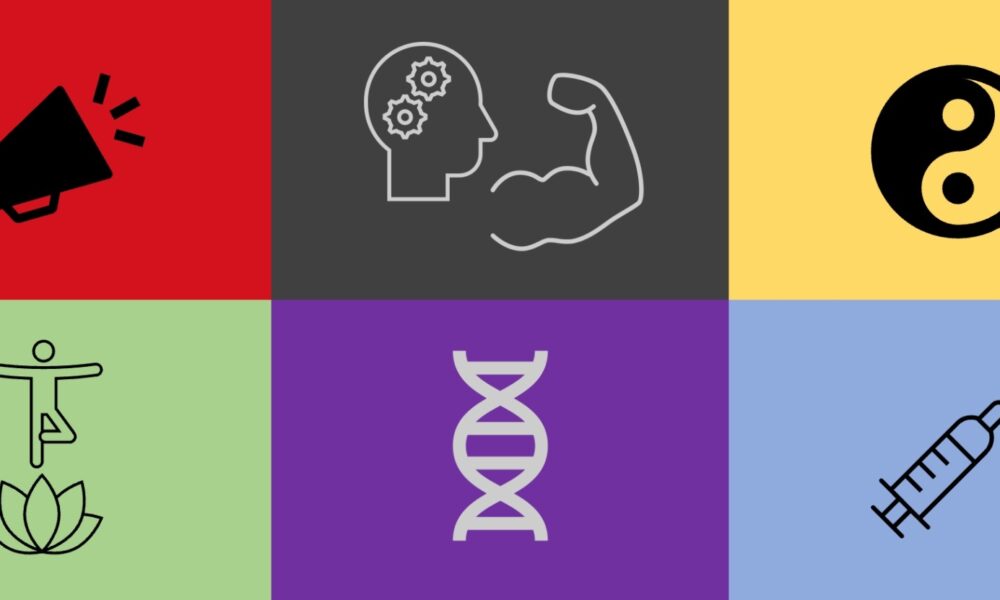On Sept. 13, as part of the annual Trottier Public Science Symposium hosted by the McGill Office for Science and Society (OSS), Nicholas B. Tiller, a researcher at the Harbour-UCLA Medical Center, spoke about the prevalence of pseudoscience in sports.
Joe Schwarcz, the director of the OSS, opened the conference by highlighting the presence of non-scientific beliefs throughout history, especially concerning human performance.
“[The Ancient Greeks] were already interested in enhancing their performances,” Schwarcz explained. “They knew about opium […], magic mushrooms, […] they ate the hearts of animals thinking that this would give them strength, and they also dosed themselves with the testicles of bulls. This was the original testosterone therapy.”
Is sports a breeding ground for pseudoscience ?
Tiller began his talk by spotlighting a number of athletes that have publicly engaged in pseudoscientific practices, with some athletes going as far as to endorse these techniques. Tiller highlighted Michael Phelps’ influential use of cupping in the 2016 Rio Olympic Games, Novak Djokovic’s ritual pilgrimage to a pyramid in Bosnia-Herzegovina, and Tom Brady’s promotion of a “cure-all” drink to individuals across the sporting community. He further expressed that many of the benefits seen by athletes who follow methods like these are brought on by a placebo effect rather than the practice itself.
Tiller emphasized the often-dangerous outcome of following pseudoscience. While the idea of placebo practices might seem harmless, the promotion of Complementary and Alternative Medicine (CAM) often undermines the credibility of scientifically proven practices.
“When it comes to spreading the message of critical thinking, scientific scepticism, reason, rationality, scientists have brought a knife to a gunfight,” Tiller explained. “This isn’t just a case of a few high-profile athletes, a few bad eggs in the bunch that are disseminating bad advice. This seems to be a systemic problem.”
The talk also tackled the question of why athletes specifically seem to be more at risk of following pseudoscience practices.
“The first thing to consider is this idea of marginal gains: The principle that no performance advantage is too small,” Tiller said. “The idea that small improvements in various aspects of life are all cumulative to have a meaningful impact on the athlete’s performance.”
Tiller also thinks this is a byproduct of the competitive nature of elite sport.
“You’ve got to think that the difference between gold and silver is sometimes infinitesimally small––it could be a fraction of a second in a short distance sprint,” Tiller furthered. “It’s all justified on the notion that every percentage point counts. It makes athletes and coaches much more experimental than they would otherwise be.”
This quest for anything that would give that competitive edge often renders athletes and coaches more vulnerable to pseudoscientific products.
“In that respect, anybody who competes in sports […] is a walking prey to the 21st century snake-oil salesman,” Tiller summarized.
Tiller focused much of his talk on the risks associated with the widespread promotion of pseudoscience. One major risk of consuming pseudoscientific products is the consumption of unregulated substances as over-the-counter dietary supplements can sometimes be contaminated with performance-enhancing drugs.
“Whether it’s inadvertent doping by the athlete because they’ve taken something that’s contaminated or whether it’s deliberate doping, the outcome is the same, it’s a two-year competitive ban [in most sports],” Tiller warned.
Based on his experience working with Olympians, Tiller emphasized that most athletes are offered limited resources and are often required to take on a job outside of training to support the financial cost. As such, devoting the limited monetary resources on practices that are not proven nor effective creates a financial risk for athletes who are inclined to do so.
For amateur athletes, falling into the trap of pseudoscience is a danger that all must be wary of when deciding to partake in a new recovery practice or take a new supplement. Tiller stresses the importance of teaching scientific, legitimate, and proven practices and fostering critical thinking.







